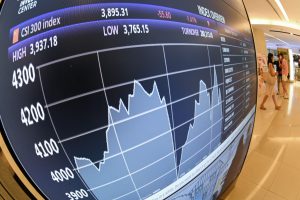MOODY’S ANALYTICS
Omicron appears to spread remarkably quickly. There is much more to learn about it.
The Omicron variant of COVID-19 adds new measures of uncertainty to the outlook for the global economy, although it is too soon to adequately quantify that risk. Much will depend on its speed of transmission, virulence, associated rates of hospitalization and death, and also the effectiveness of vaccines and antiviral medications against it. It will be at least two more weeks before more will be known as scientists around the world build a better understanding of the new variant and as the severity of infections becomes clearer.
Our December forecasts are being prepared now and will be posted for clients next week. The lack of confirmed scientific research on Omicron means that there will be no shifts in our forecast assumptions for most countries, other than what we already know about the current surge of the Delta variant, mostly in Europe.
Omicron reminds us that the global economic recovery remains tethered to the pandemic. We are broadly assuming that there will be new waves of infections, but that each wave will be less disruptive to the healthcare system and economy than the previous one. We assume that the Omicron variant is consistent with this assumption. If the variant turns out to be more contagious, virulent, and disruptive to the economy, we will need to revise our economic outlook.
In the meantime, our alternative downside scenarios for November, which are currently available, include assumptions for new waves of COVID-19, the resulting strains on public healthcare systems, and tighter social distancing restrictions.
As we await the scientific research on Omicron and what the results may mean for our epidemiological assumptions, one can think about the potential risks it poses from a policy perspective. There have been some quick reactions by governments, signaling less hesitancy to confront the risks, but an additional risk of overreacting. One country, Israel, has already closed its borders to foreigners for 14 days beginning November 29 and will require citizens re-entering to quarantine. The list of countries banning arrivals from at least eight southern African countries is lengthening daily and includes Japan, India, Australia, the U.S. and the U.K. The governor of New York has declared a pre-emptory state of emergency. Further, social distancing rules could be made more stringent within many countries, particularly if policymakers no longer think that rules can differ depending on vaccination status.
Asia Pacific Region
For the Asia-Pacific region there are specific factors to follow in coming weeks, particularly as at least two cases of Omicron have already been detected in Hong Kong and Australia.
First, will policymakers in the region respond by accelerating vaccination programs? Countries including Myanmar, Laos, Indonesia, India, Hong Kong, Thailand, the Philippines and Vietnam have still vaccinated less than 65% of their populations (12 years of age and older). A current second-round spike of the Delta variant in Vietnam illustrates the need to accelerate the pace of vaccination.
Second, will travel lanes continue to be opened between select countries? Already, travel and tourism is expected to be one of the slowest components of the APAC economic recovery. Much of Southeast Asia, particularly the Philippines and Thailand, depend highly on the industry for growth. Further, what will the new variant mean for travel across the land border between Hong Kong and mainland China? This remains uncertain.
Third, will policymakers in the APAC region accelerate the capacity of public health systems to accommodate all who may need treatment in a future COVID wave? Such investment would be critical in minimizing any new social distancing measures if a new wave arrives.
Further, the new Omicron variant illustrates the existing risk to the global economy from regions or individual countries that have low vaccination rates. This includes all of sub-Saharan Africa, where rates remain below 50%, and 60 countries globally with rates below 20%.
MOODY’S ANALYTICS / Copyright © 2021, Moody’s Analytics, Inc.All Rights Reserved.
*The views expressed on Industry Announcements are not necessarily the views of
Asia Financial.
*To contribute press releases, research or commentaries, please send an email to
[email protected]
























